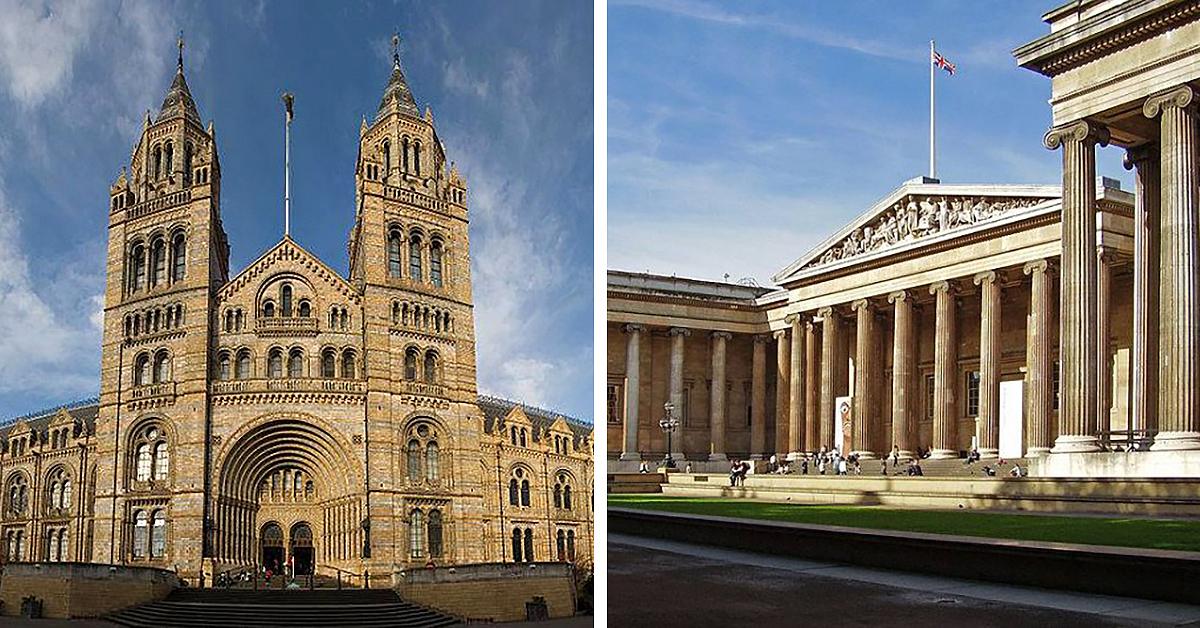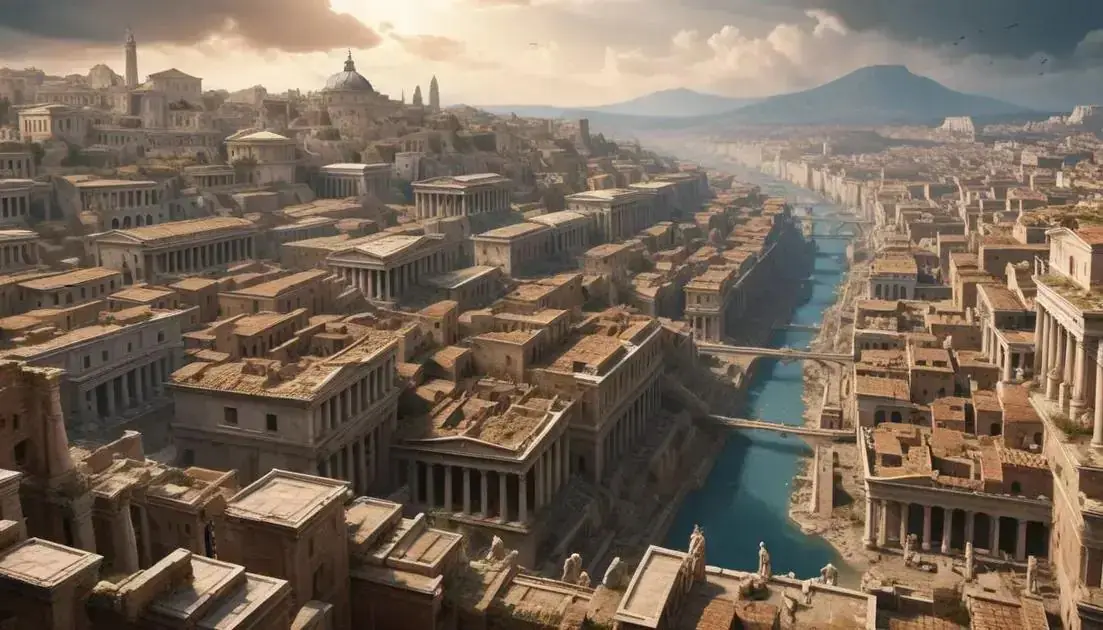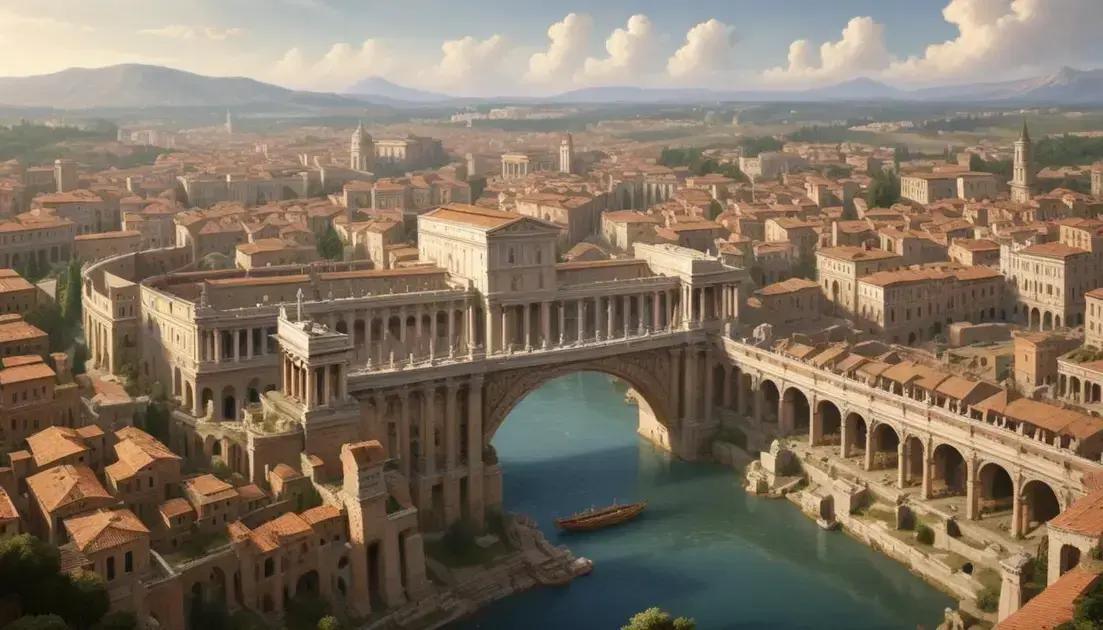
The Influence of the Ancient Romans on Modern Architecture
The enduring legacy of Roman architecture is undeniable. From the imposing grandeur of government buildings to the subtle elegance of residential homes, the influence of ancient Roman design principles continues to shape the built environment across the globe. This profound impact stems from the Romans’ innovative engineering techniques, their masterful use of materials, and their sophisticated understanding of aesthetics and functionality. This exploration delves into the specific ways Roman architectural elements persist in modern buildings, examining key features and showcasing examples of their enduring influence.
I. The Genesis of Roman Architectural Style
Roman architecture wasn’t born in a vacuum. It emerged from a rich tapestry of influences, drawing inspiration from earlier civilizations like the Greeks and Etruscans, while simultaneously forging a distinct and highly original style. The Etruscans, known for their mastery of arch construction, provided crucial groundwork for the later Roman development of arches, vaults, and domes. The Greeks, with their emphasis on proportion, symmetry, and classical orders, contributed significantly to the aesthetic vocabulary adopted by Roman architects.
This fusion of influences resulted in a style characterized by its practicality and aesthetic sophistication. Roman architects weren’t solely focused on beauty; functionality was paramount. Buildings were designed to serve a specific purpose, whether it was a temple, a public bath, an amphitheater, or a simple dwelling. However, this functionality was never achieved at the expense of aesthetics. Roman builders understood the power of design to inspire awe and create a sense of order and harmony. Their structures were not merely utilitarian; they were statements of power, wealth, and cultural sophistication.
The Romans’ mastery of engineering and materials science further distinguishes their architectural style. Their innovative use of concrete, a material they refined and perfected, allowed for the creation of unprecedented structures, defying the limitations of earlier building techniques. Concrete’s versatility permitted the construction of large-scale projects, including massive aqueducts, sprawling bath complexes, and colossal amphitheaters, all showcasing Roman ingenuity. This material wasn’t just a building block; it was an enabler of architectural ambition.
II. Key Roman Architectural Innovations and Their Modern Echoes
Several key innovations in Roman architecture continue to resonate in contemporary building design. These include:
A. The Triumph of the Arch and Vault:
The arch, a curved structure capable of spanning significant distances without the need for intermediate supports, revolutionized Roman architecture. It allowed for the creation of vast, open spaces previously unimaginable. The Romans perfected the use of the arch, integrating it seamlessly into their designs for bridges, aqueducts, and various buildings. The vault, an extended arch forming a ceiling or roof, further expanded the possibilities of Roman building design, allowing for the construction of expansive interior spaces without the need for numerous supporting columns.
Modern buildings frequently employ arches and vaults, demonstrating the enduring appeal of these elegant and structurally efficient forms. Arches adorn entrances, create visually striking features, and serve practical purposes in modern bridges and tunnels. Vaulted ceilings remain a popular choice in large-scale structures such as museums, churches, and train stations, offering both aesthetic appeal and structural support. The use of arches and vaults in contemporary structures often echoes the Roman emphasis on grandeur and the creation of impressive interior spaces.
B. The Majesty of the Dome:
The dome, a hemispherical vault, is another significant Roman architectural contribution that has profoundly impacted modern building design. The Pantheon in Rome, with its awe-inspiring concrete dome, stands as a testament to Roman engineering prowess and architectural creativity. The dome’s ability to create a monumental sense of space, combined with its inherent structural strength, has ensured its continued popularity.
The dome’s influence is evident in countless modern structures, from the grand domes of capitol buildings to the smaller, more intimate domes found in residential architecture. The dome’s enduring appeal stems from its ability to create a sense of enclosure and grandeur, while also offering practical advantages in terms of light and ventilation. The modern use of domes often retains the symbolic association with power, authority, and divine presence found in Roman structures.
C. The Enduring Influence of Concrete:
The Romans’ refinement of concrete represents a pivotal moment in construction history. Their development of pozzolana concrete, a durable and versatile material, enabled them to construct monumental structures with an unprecedented scale and complexity. This innovative material, which allowed for structures to resist weathering and the effects of age, stands as a testimony to Roman ingenuity.
Modern concrete, while utilizing different methods and additives, remains a cornerstone of contemporary building materials. The structural properties and versatility of concrete have allowed for innovations in modern architectural design, making it possible to construct skyscrapers, bridges, and other large-scale structures. The legacy of Roman concrete lies not only in the material itself but also in the possibilities it unlocked for architectural innovation.
III. Roman Architecture’s Impact on Specific Building Types
The pervasive influence of Roman architectural elements can be clearly seen across various building types:
A. Governmental Structures:
Government buildings worldwide frequently reflect Roman architectural principles. The use of classical orders, such as Doric, Ionic, and Corinthian columns, is often seen in government structures, evoking a sense of permanence, authority, and stability. These structures aim to convey ideals of order, strength, and continuity, echoing the Roman use of similar principles to showcase the power and stability of the state.
The United States Capitol Building is a prime example, incorporating elements such as a massive dome, classical columns, and other features reminiscent of Roman temples and basilicas. Similar architectural styles can be observed in many other governmental buildings globally, suggesting that Roman design language continues to communicate these important attributes.
B. Religious Buildings:
Roman basilicas, large public buildings used for legal and civic functions, exerted a profound influence on the design of early Christian churches. The basilica’s hall-like structure, characterized by a long nave flanked by aisles and culminating in an apse, provided a model readily adapted to accommodate large congregations.
The basilica’s influence can be traced through the evolution of church architecture from the early Christian period to the present day. The open, spacious design, the clearly defined axes, and the use of arches and vaults, all originally associated with Roman basilicas, became essential components of Western church architecture. Modern churches, even in contemporary architectural styles, often incorporate elements that echo the grand scale and spatial organization of Roman basilicas.
C. Residential Buildings:
The impact of Roman architecture extends beyond large public buildings; its influence is subtly present in residential design. The incorporation of arches in doorways, windows, and interior features creates an elegant and timeless aesthetic. Roman-inspired decorative motifs and patterns add intricate detail and ornamentation to modern houses.
The design choices may be subtle, but they reflect a broader appreciation for the enduring elegance of Roman aesthetic principles. Features such as vaulted ceilings (where space allows), classical moldings, and the use of natural materials such as stone and marble, represent direct or indirect inspirations from Roman residential architecture.
D. Commercial and Public Spaces:
The influence of Roman architecture extends into modern commercial buildings and public spaces. The use of arches, vaults, and colonnades can be found in shopping centers, museums, and office buildings. These architectural choices create visually appealing spaces, often providing a sense of grandeur and formality.
Modern adaptations of Roman design elements are often used to create an atmosphere of sophistication and timeless elegance in commercial spaces, influencing a building’s aesthetic and even perceived value. This demonstrates the ongoing relevance of Roman aesthetics in marketing and commercial appeal.
IV. The Continued Relevance of Roman Architectural Principles
The persistent appeal of Roman architecture transcends mere imitation; it stems from the enduring relevance of its underlying principles. The Romans’ emphasis on functionality, durability, and aesthetic harmony continues to inspire modern architects and engineers. Contemporary architects draw inspiration from the Roman approach to structural design and spatial organization, seeking to create buildings that are both functional and beautiful.
This enduring legacy is not only about visual aesthetics; it is also about the values that Roman design embodies. The Romans’ focus on creating structures that could endure, that could withstand the test of time, is echoed by the modern concern for sustainable and environmentally conscious building practices. The attention to detail, the skillful use of materials, and the thoughtful integration of form and function were hallmarks of Roman architecture and remain essential considerations in modern building design.
V. Conclusion: A Timeless Legacy
The influence of ancient Roman architecture on modern building design remains profound and multifaceted. It’s not simply about copying historical styles but about inheriting and adapting the fundamental principles of Roman design – principles of functionality, durability, and aesthetic excellence. The continuing use of arches, vaults, domes, and other Roman features demonstrates the timeless appeal of these elements and their ability to contribute to the creation of stunning and enduring structures.
The study of Roman architecture offers invaluable lessons for contemporary architects and urban planners. The Romans’ sophisticated approach to materials, structural engineering, and spatial planning offers insights applicable to modern projects. By engaging critically with the historical achievements of Roman architecture, we can appreciate not just its beauty, but also its practical innovations and underlying philosophical values that continue to inform the built environment. The legacy of Roman architecture is not just a visual one; it is a continuing conversation about the relationship between form, function, and enduring design.


